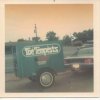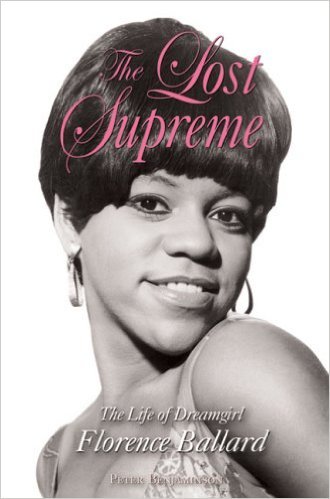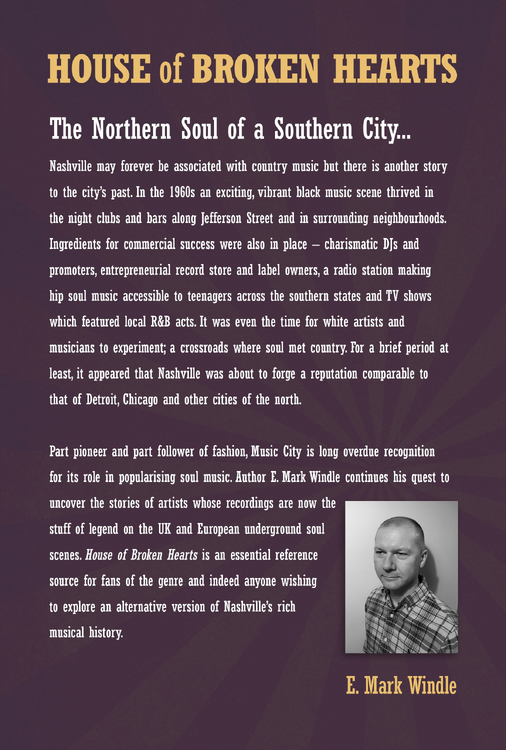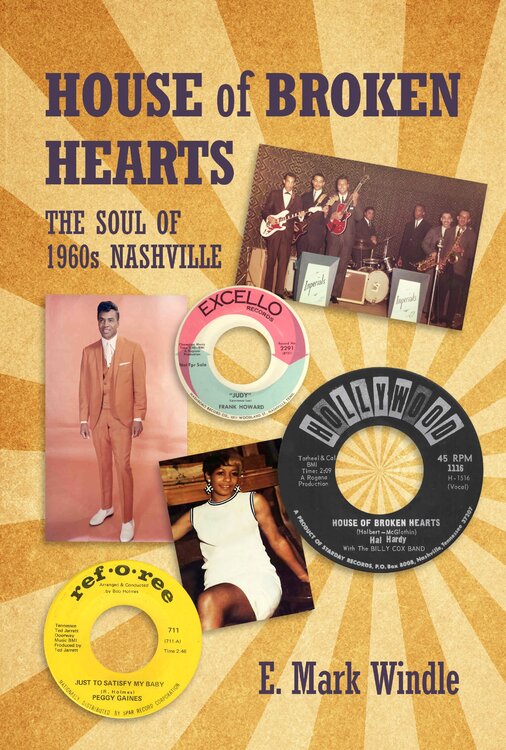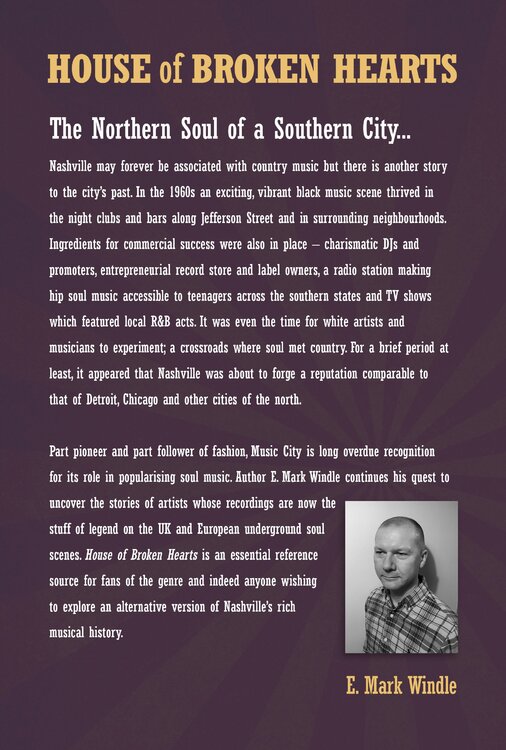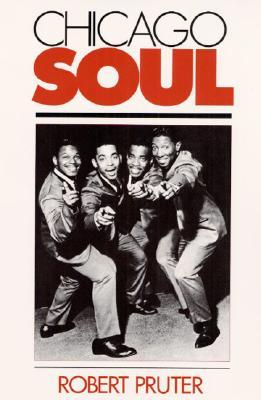Everything posted by Windlesoul
-
But was it 'A Big Thing' after all ?
Can I echo this, spot on post here re Scotty Todd. Certainly a staple part of a vast number of 60s Carolina / Va bands live and recording repertoire (Todd, Spontanes, Embers, Tempests etc). No doubt due to local plugging of the Radiants by local stations like Big Ways / similar or Nashville's WLAC.
-
New book arrivals at A Nickel And A Nail !
Around 30 more soul related book title arrivals at A Nickel And A Nail this week. Bios on Jackie Wilson, Johnny Otis, Ruth Brown, Jerry Butler, Jack Ashford, and others; also histories on the Brill Building and the Apollo. https://a-nickel-and-a-nail.myshopify.com/collections/books/products/only-the-strong-survive-memoirs-of-a-soul-survivor-hardback-jerry-butler Have a great week. Site will be down for a while for maintenance and upgrades from Sunday 23 July onwards so get your orders in quick please if there's anything you fancy to pack in your holiday suitcase for plane and poolside reading maybe.... Cheers, Mark.
-
The Lost Supreme by Peter Benjaminson (book)
Available now in A Nickel And A Nail; Florence Ballard's story by Peter Benjaminson £9.99 Link here https://a-nickel-and-a-nail.myshopify.com/collections/books/products/the-lost-supreme-the-life-of-dreamgirl-florence-ballard-peter-benjaminson Have a browse whilst you're there Cheers, Mark.
-
fanzines and soul books
PM'd you Rob...
-
Chicago Soul (book) by Robert Pruter
Chicago Soul by Robert Pruter, available now at A Nickel And A Nail the UK's specialist independent bookstore for soul, blues and jazz related literature. Link to blurb and ordering Chicago Soul here https://a-nickel-and-a-nail.myshopify.com/collections/books/products/chicago-soul-robert-pruter Whilst there why not have a browse at our other soul bio / northern scene related titles. Also sign up for alerts, discounts etc.
-
A House On Fire (Philadelphia book)
Now available at A Nickel And A Nail £14.99 link here https://a-nickel-and-a-nail.myshopify.com/collections/books/products/a-house-on-fire-the-rise-and-fall-of-philadelphia-soul-john-a-jackson
-
Paramount Four - You don't know - Southern City
Paramount Four - You don't know / I've made up my mind - Southern City ex Two incredible sides for northern and deep fans and pretty topical at the moment £450.00 free post - sorry but this particular sale is for delivery within UK only. PayPal please.
-
House of Broken Hearts by E. Mark Windle (book) - Hardcover
Certainly did mate https://recordcollectormag.com/reviews/house-broken-hearts
-
the Beat tv programme
Another great Nashville linked programme was Night Train (shot locally. Hoss Allen did The !!! Beat in Texas from memory because of the better TV studio / recording and production facilities than Nashville could offer at the time). Shame that only a few of the Night Train episodes are around, quality a bit grainy but some great stuff including a sublime version of One Step Ahead by Peggy Gaines. Was speaking to the museum editor of the Country Music Hall of Fame (who happens to be an R&B fan and was involved in the Night Train exhibition / Grammy winning CD) - he has spent years trying to locate the other episodes, but to no avail.
-
House of Broken Hearts by E. Mark Windle
-
News: House of Broken Hearts by E. Mark Windle
Also now available in hardcover format from this week, exclusively from A Nickel And A Nail
-
House of Broken Hearts by E. Mark Windle
Just a note to say "House of Broken Hearts" now available in both B&W and colour versions https://a-nickel-and-a-nail.myshopify.com/collections/books/products/house-of-broken-hearts-e-mark-windle-black-and-white-version
-
News: House of Broken Hearts by E. Mark Windle
Just a note to say "House of Broken Hearts" now available in both B&W and colour versions https://a-nickel-and-a-nail.myshopify.com/collections/books/products/house-of-broken-hearts-e-mark-windle-black-and-white-version
-
House of Broken Hearts by E. Mark Windle (book) - Hardcover
The first book to dig deep into the soul of 1960s Nashville. To give customers even more choice, this is now also available in hardcover format. Available exclusively from A Nickel And A Nail, the independent bookstore for soul, blues and jazz related literature. Follow the link: https://a-nickel-and-a-nail.myshopify.com/collections/books/products/house-of-broken-hearts-the-soul-of-1960s-nashville-hardcover-version-e-mark-windle
-
Free shipping at A Nickel And A Nail for Fathers Day
Happy Fathers day UK! Free shipping for today only on all books, printed matter and picture cover 45s, only at A Nickel And A Nail. Applies to all orders over £20 (UK delivery only). Follow the link and quote TREATDAD at checkout. Tell your kids!!! https://a-nickel-and-a-nail.myshopify.com/collections/books
-
Chicago Soul by Robert Pruter (book), in at A Nickel And A Nail
Available at A Nickel And A Nail, small batch just in of new unused stock of Robert Pruter's "Chicago Soul". Order here: https://a-nickel-and-a-nail.myshopify.com/collections/books/products/chicago-soul-robert-pruter While there why not have a browse and sign up for alerts, reviews and discounts. Also check out the Blog section - some interesting stuff in there, chapter excerpts, artists bios etc. Have a great weekend! Mark.
-
Detroit 67 - £3 in "the works"
FIGHT! £3 ? Well I think I can beat that.... £2.99 at A Nickel And A Nail, the UK's independent online bookstore for soul, blues and jazz related literature - but I've only a few left so hurry!! https://a-nickel-and-a-nail.myshopify.com/collections/books Whilst you're there have a browse and why not sign up for alerts, discounts, news etc.
-
Blue-eyed Soul?
It's in the follow up, "Rhythm Message", at this link: https://a-nickel-and-a-nail.myshopify.com/collections/books/products/rhythm-message-e-mark-windle
-
Blue-eyed Soul?
Bob Meyers and the Rivieras from North Carolina. They were known locally as the Rivieras save the Lawn recording (Bob was with them about a year or so)
-
Blue-eyed Soul?
- Blue-eyed Soul?
Well.... https://a-nickel-and-a-nail.myshopify.com/products/its-better-to-cry-colour-version-e-mark-windle- Blue-eyed Soul?
Well.... https://a-nickel-and-a-nail.myshopify.com/products/its-better-to-cry-colour-version-e-mark-windle- Blue-eyed Soul?
- Blue-eyed Soul?
Chris yes, the Sesame St guy Re Soul Communicators there's a thread on SS here somewhere that links Chuck Corby to them Bob - I'll upload a pic or two as proof! There's one of them performing at a high school dance and another from the back of their LP- Blue-eyed Soul?
Whether or not you are a fan of early 60s R&B, but this is one of the 'blackest' white female soulful recordings of our insular scene! And she's a civil rights activist. What more do you want! - Blue-eyed Soul?

